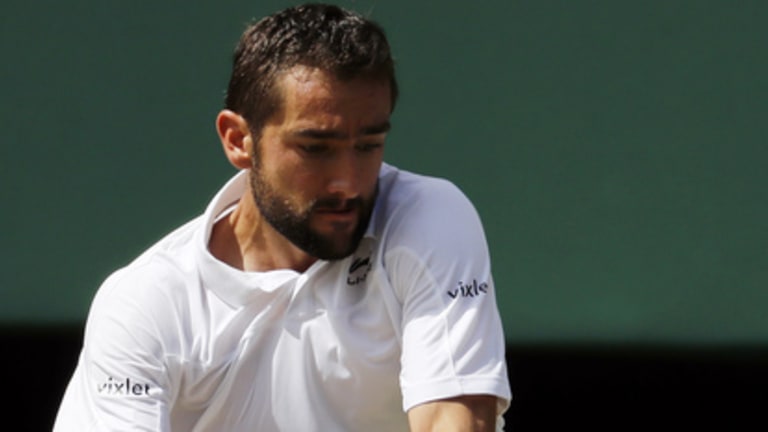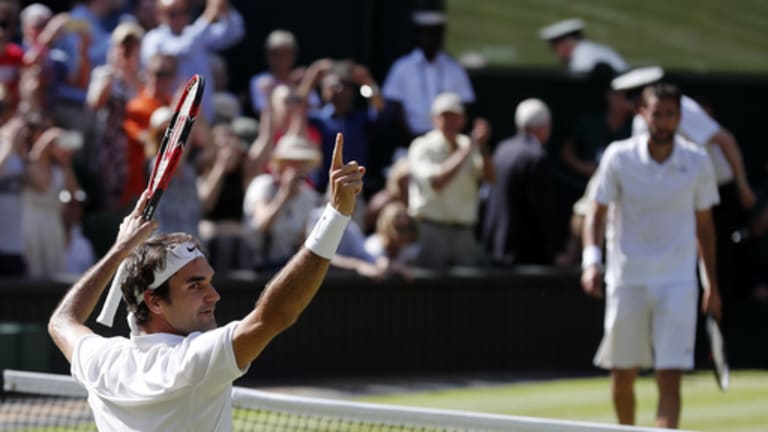When Roger Federer was asked to assess his 6-7 (4), 4-6, 6-3, 7-6 (9), 6-3 win over Marin Cilic in the Wimbledon quarterfinals on Wednesday, the first words out of his mouth were, “A lot happened out there.”
That’s one way of putting it.
Amid everything that happened during its three hours and 17 miniutes, amid all of the clutch serves and double-clutched returns, the 27 aces hit by Federer and the 23 hit by Cilic, the 67 winners hit by Federer and the 59 by Cilic, the in-by-a-millimeter Hawk-Eye challenges, the nerve-jolting ping-pong volley exchanges, the out-of-nowhere backhand passes threaded up the line, the glimpses of Cilic's coach, Goran Ivanisevic, trying not to watch, and Federer's wife, Mirka, willing her husband on, one shot stays in my mind.
Or, I should say, one sprint. One desperation sprint and hack at a forehand. It came at the pinnacle of the match, with Federer and Cilic deadlocked at 9-9 in the fourth-set tiebreaker. If Cilic won the rally, he would have his fourth match point, and the first on his serve. If Federer won it, he would have his fifth set point—in this circumstance, a virtual match point of his own.
Federer served, but Cilic grabbed the upper hand with a deep return, and he pushed Federer back with his next shot. For the better part of three sets, Cilic had been winning rallies like this one, with heavy hitting from the baseline. Now it looked like he had found one more big shot when he needed it: He pummeled a backhand down the line, and it appeared for a second, as it skidded through the grass, to have won him the point.
Except that, this time, Federer didn’t let it. He turned into a blur of white as he flew to his right and reached out to chop a forehand back. As with so many of Federer’s desperation gets over the years, he didn’t just put the ball back over the net, he put it in a position that was just a little uncomfortable for his opponent. The ball buzzed crosscourt and stayed low; Cilic, forced to pull up to get it back over the net, sent his forehand just wide. Federer never trailed again.

